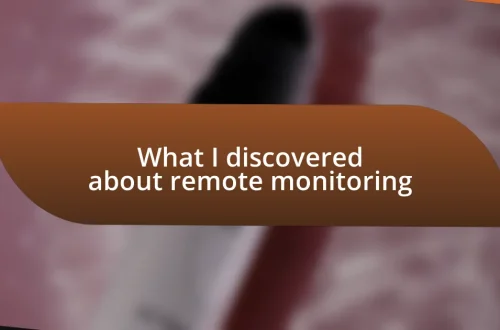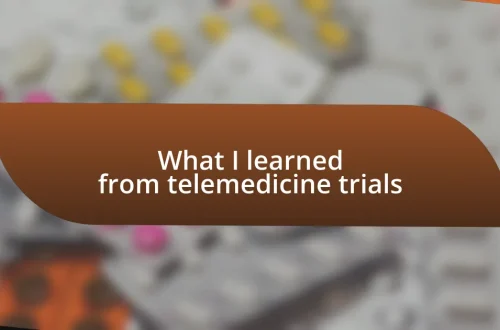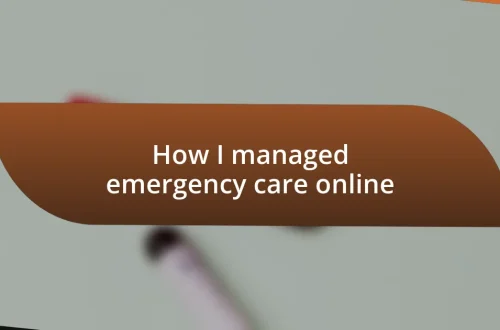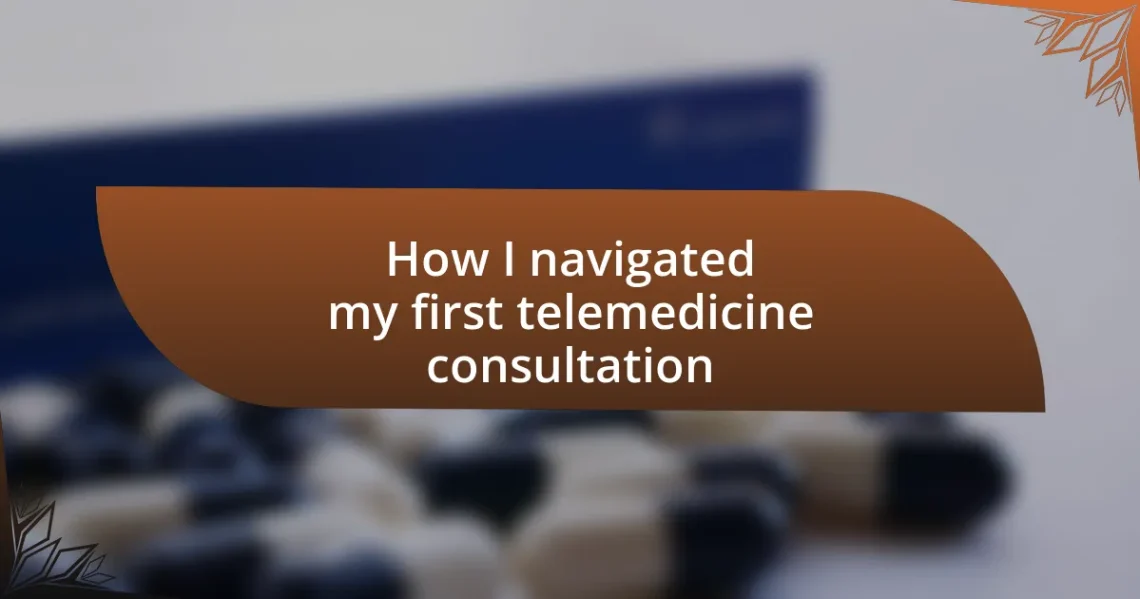
How I navigated my first telemedicine consultation
Key takeaways:
- Telemedicine enhances healthcare access with convenience, though some warmth may be lost compared to in-person visits.
- Preparation for a telemedicine consultation, including organizing health records and setting up technology, boosts confidence and comfort.
- Effective communication is essential; speaking clearly, active listening, and maintaining body language help in virtual consultations.
- Post-consultation reflection and follow-up are vital for understanding and continuity of care.
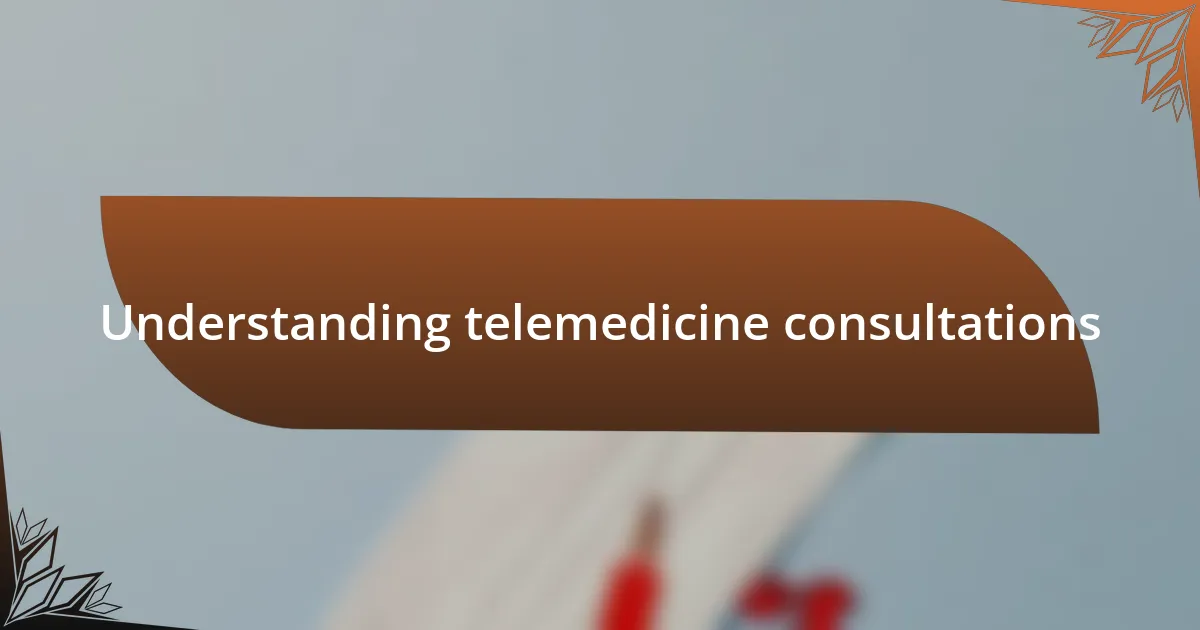
Understanding telemedicine consultations
Telemedicine consultations have transformed how we access healthcare, making it more convenient and accessible than ever. I remember my first virtual appointment vividly; I felt a mix of excitement and nervousness as I navigated the unfamiliar technology. Isn’t it fascinating how a simple video call can connect us with specialists who might be hundreds of miles away?
During my consultation, I was surprised by the level of personalization I experienced. My doctor took the time to ask about my symptoms and listen intently, as though I were sitting in the same room. This made me realize that despite the digital barrier, the essence of care remained intact. Has technology really been the game-changer we all hoped for in healthcare, or does it still miss the warmth of an in-person visit?
I also found the efficiency of telemedicine quite remarkable. Rather than spending hours in a waiting room, I could have my consultation from the comfort of my home. However, I couldn’t help but wonder: are there aspects of our health journey that technology may overlook? Overall, these consultations opened my eyes to a new realm of healthcare that balances convenience with genuine human connection.
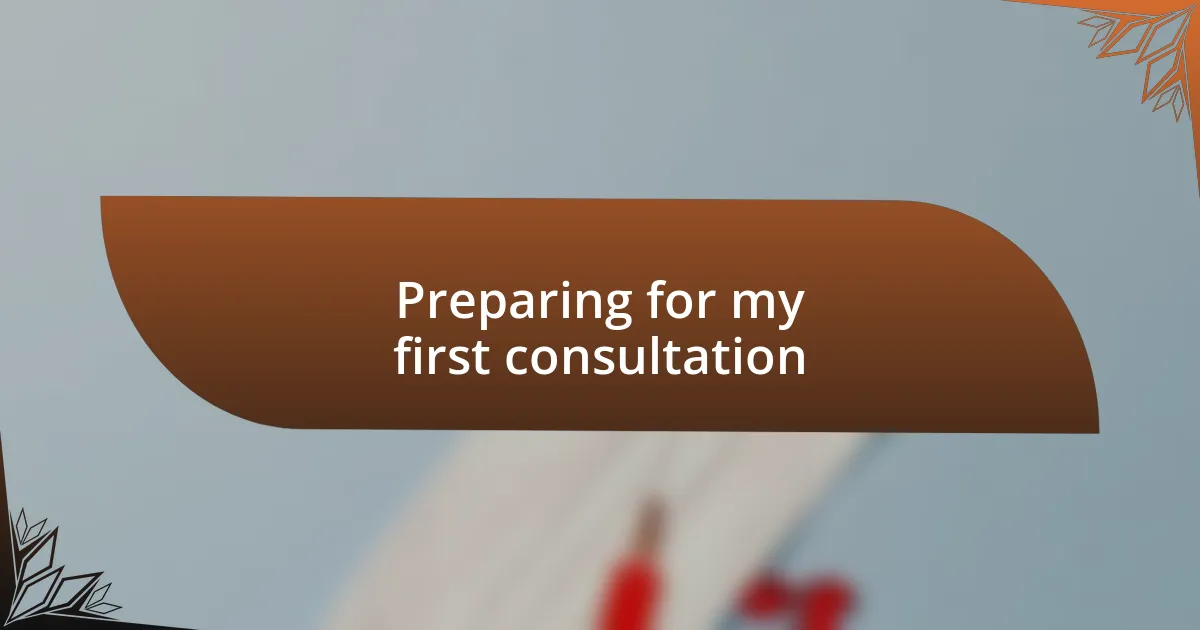
Preparing for my first consultation
Preparing for my first telemedicine consultation felt like prepping for a new adventure. I made sure to have my health records handy, as I didn’t want to miss any crucial details that might help my doctor understand my situation. The anticipation mixed with a touch of anxiety was palpable; what if I stumbled over the technology?
I realized that creating a quiet, distraction-free environment was essential. Finding a comfortable spot in my home, I arranged my notes and had a glass of water nearby. I remember glancing at my reflection on the screen and thinking about how minor a concern my appearance was compared to the potential benefits of this new approach to healthcare. Do you ever feel that a little extra preparation can make all the difference in how you approach something new?
I also took some time to rehearse what I wanted to discuss. Jotting down my symptoms and questions allowed me to articulate my concerns clearly without the pressure of live conversation. The whole process made me feel empowered, as if I were taking charge of my health in a very modern way. Isn’t it incredible to think that just a bit of preparation can ease the overwhelming anticipation of a new experience?
| Preparation Strategy | My Experience |
|---|---|
| Gathering health records | Feeling reassured by having everything organized |
| Choosing a quiet space | Created a calming environment that made me feel at ease |
| Writing down my questions | Helped clarify my thoughts and boosted my confidence |
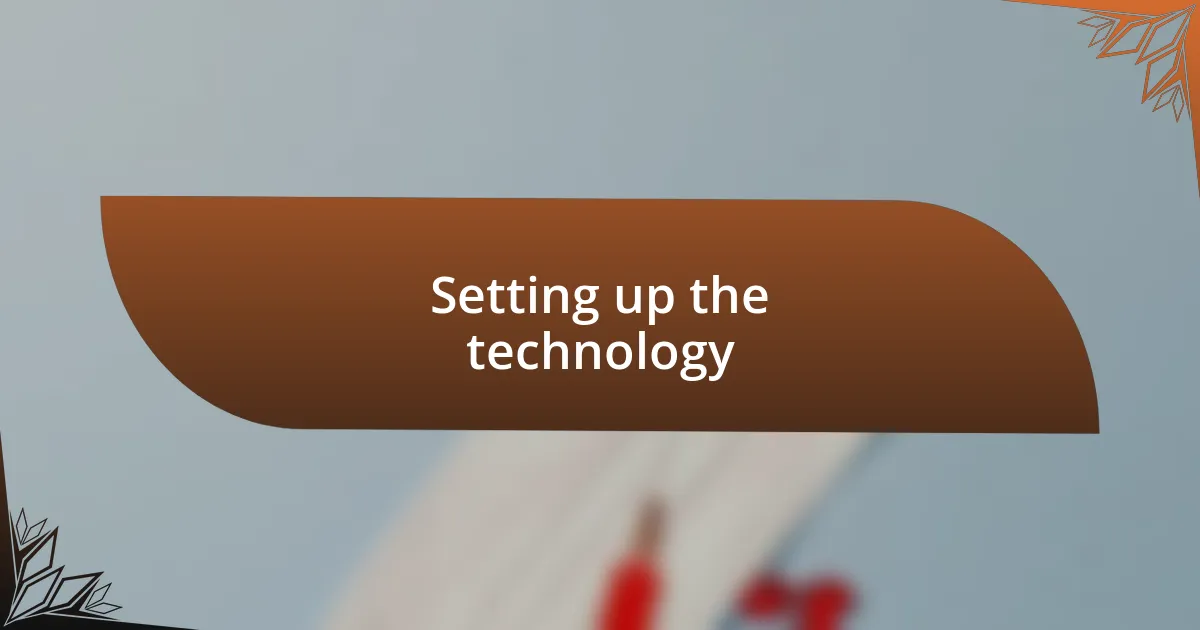
Setting up the technology
Setting up the technology
When it came to technology, I realized I needed a reliable setup that would help me focus on the consultation rather than the tech itself. I chose my laptop for its larger screen and clearer audio, which felt more personal than using my phone. Testing my camera and microphone beforehand was a game changer; I felt a surge of confidence knowing everything was functioning properly.
Here’s a quick checklist that helped me get everything ready for my first telemedicine appointment:
- Device Choice: I opted for a laptop for better visibility and sound.
- Test Connection: A day before, I connected via video call with a friend to ensure my audio and camera were working smoothly.
- Stable Internet: I positioned myself close to my router to avoid any connectivity issues.
- Platform Familiarity: I took a few minutes to familiarize myself with the telemedicine platform, which really eased my nerves during the appointment.
- Comfortable Setting: I set up my space by adjusting the lighting and seating, making sure it was conducive to clear communication.
Preparing the tech couldn’t have felt simpler, but it had me feeling less anxious and more in control. I’ll never forget the relief that washed over me when I saw my doctor’s face clearly on screen, knowing I’d taken the right steps to make this experience work for us both.
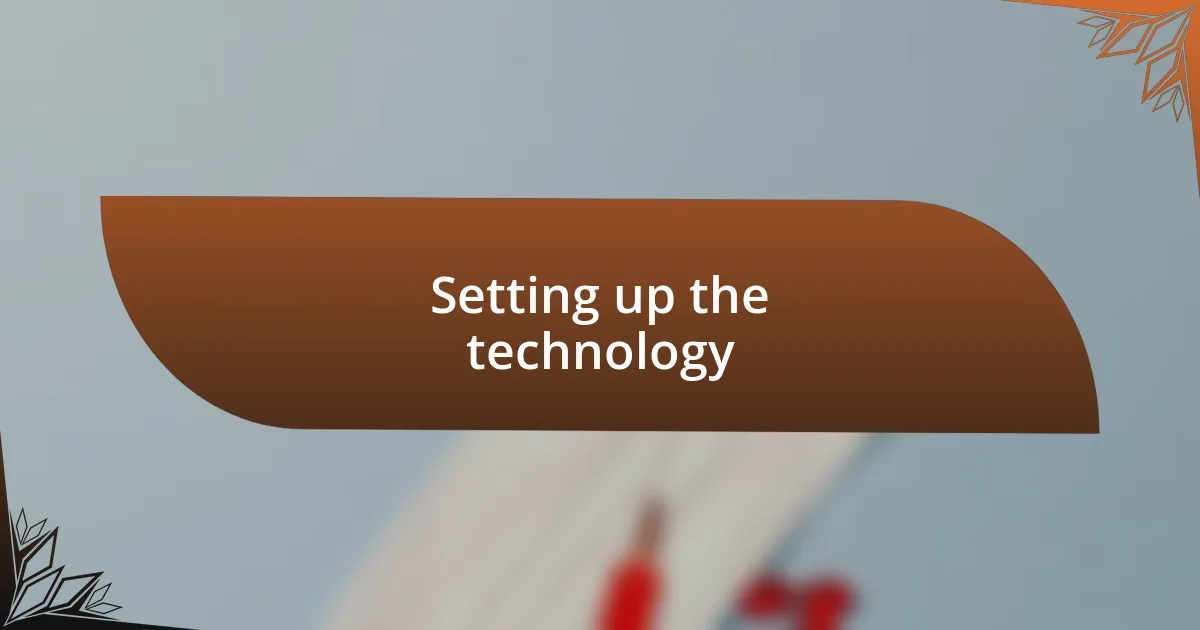
Tips for effective communication
In a telemedicine setting, effective communication is vital to ensure your healthcare concerns are accurately understood. I made sure to speak slowly and clearly, articulating my symptoms without racing through the details. Have you ever been in a situation where you felt rushed? It can create misunderstandings, so take your time.
Active listening is another crucial element. During my consultation, I focused intently on my doctor’s responses and asked clarifying questions when needed. I remember nodding along, signaling attentiveness, even though the doctor couldn’t see me. It felt reassuring to engage in dialogue; it turned a one-sided exchange into a meaningful conversation about my health.
Lastly, body language still matters, even in a virtual appointment. I sat up straight and maintained eye contact with the camera, simulating the presence of my doctor right across from me. This simple adjustment not only helped convey my confidence but also created a sense of trust in our interaction. Have you noticed how a little posture change can shift the whole tone of the conversation?
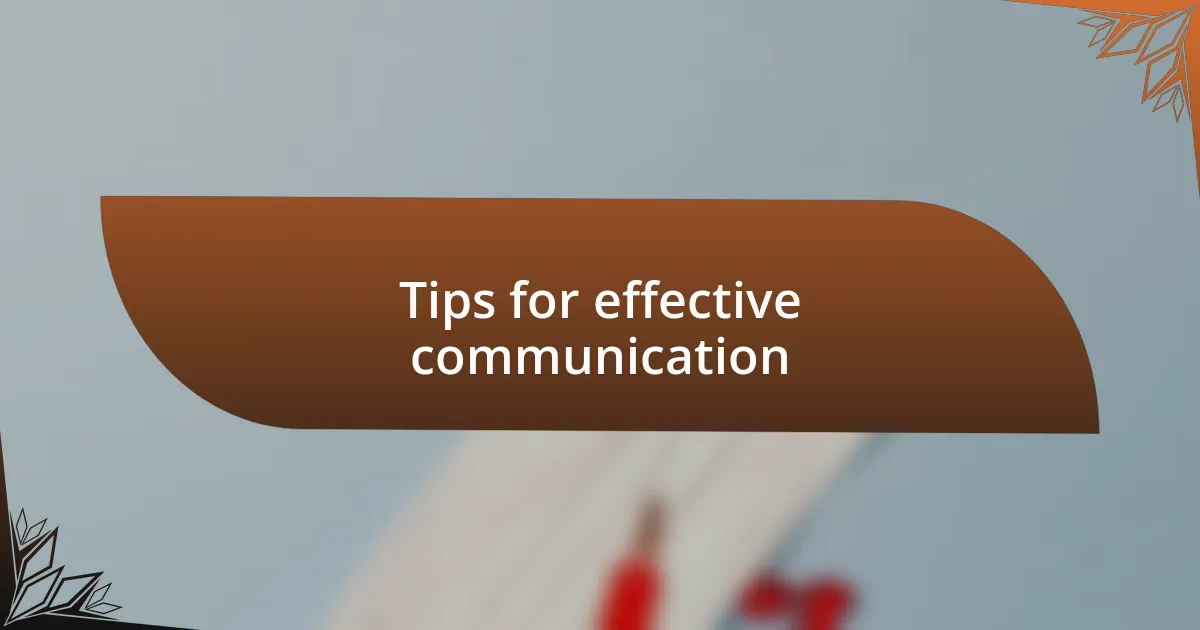
Post-consultation follow-up steps
After the consultation, I took some time to review my notes. This helped me reinforce what the doctor explained, and it felt empowering to have a clearer understanding of my next steps. Have you ever felt overwhelmed after a doctor’s appointment? Reflecting on the conversation in a quiet moment can really clarify your thoughts.
Following my consultation, I didn’t hesitate to write down any additional questions that popped into my mind. I find that sometimes, answers come to me later, and jotting them down ensures I don’t forget. It’s also wise to reach out to the healthcare provider if anything feels unclear. Have you ever wished you’d spoken up during an appointment? Well, taking that initiative post-visit can make a difference.
Lastly, I scheduled a follow-up appointment when necessary. I’ve learned that continuity in care is crucial. Knowing that I had another check-in on the horizon not only eased my anxiety but also motivated me to be proactive about my health. It’s a comforting thought, don’t you agree?
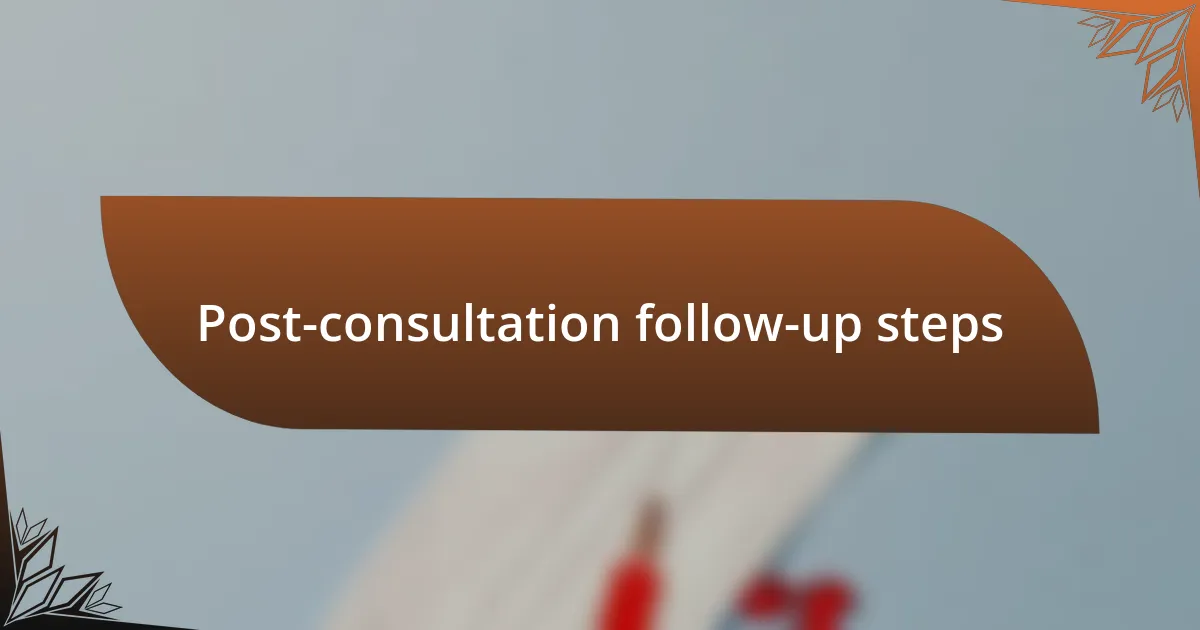
Assessing the overall experience
Assessing the overall experience of my first telemedicine consultation left me with mixed feelings. On one hand, the convenience of seeing a doctor from home was fantastic; I didn’t have to deal with traffic or waiting rooms. But on the other hand, I couldn’t shake off some initial awkwardness with the technology—did my connection look clear? Was my face fully in view? Those little worries slightly clouded my enjoyment of the process.
As I reflected on the encounter, I realized that the quality of the interaction mattered most. The doctor was personable and patient, which eased my nerves. However, I wondered if non-verbal cues got lost through a screen. Did you ever feel that the emotion in someone’s voice doesn’t quite convey the same urgency when it’s just a voice over a call? I know I did, which made me appreciate clear communication even more.
Ultimately, I found that the overall experience gave me insights into how telemedicine can be an efficient alternative to traditional visits. However, I’ve also learned that it’s essential to gauge my comfort level next time. What about you? Have you thought about how your past experiences shape your approach to medical consultations? With a little adjustment and openness, I believe it can truly become a worthwhile part of our healthcare journey.


